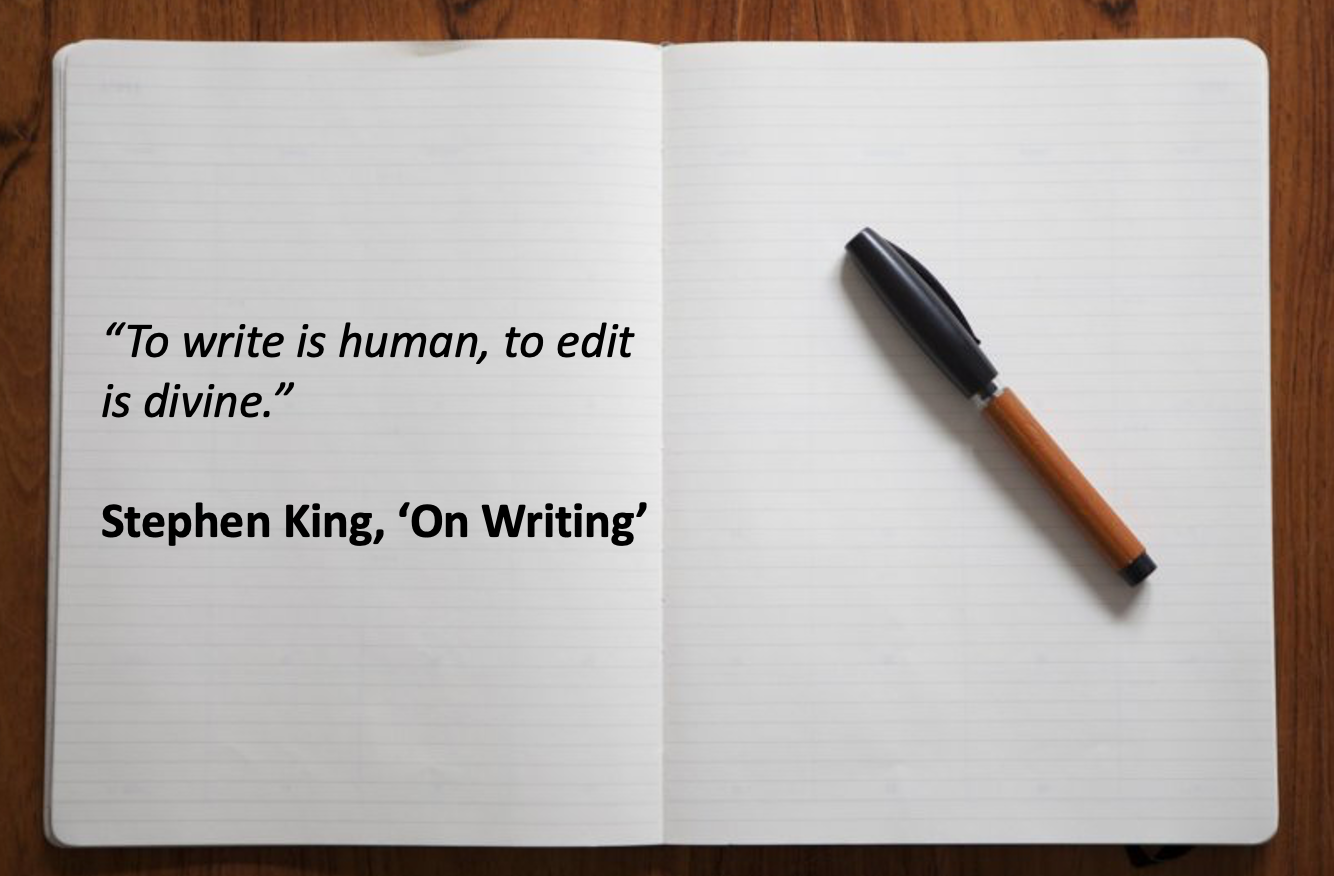“To write is human, to edit is divine.”
Stephen King, ‘On Writing’
‘I’ve finished’ is a common refrain you hear in the classroom soon after pupils are set a writing task. Pupils’ urge to write can see them rush to pour their ideas onto the page. Alas, for too many pupils, their energised efforts can result in a haste to finish that proves damaging. It can compromise a vital step in the writing process: editing for writing accuracy.
Pupils can possess misconceptions about editing and revising writing. Flawed notions that editing is simply about writing a ‘neat version’ can be common from pupils – both young and old. Additionally, pupils can have a narrow conception of editing as merely a matter of correct spelling.
The challenge of poor editing comes as no surprise to teachers. It occurs because pupils’ working memory is overloaded by undertaking so many complex moves at any one time during the writing process. Without an automatic knowledge of accurate sentence structures, grammar, and spelling, when pupils are asked to make multiple edits to a piece of writing they can find it difficult to even know where to start.
Chunking down the editing process
For extended writing, if pupils are not stopping to revise and edit at regular intervals, they can get to the end of the draft and feel overwhelmed by the scale of the job. Chunking the act of writing into smaller steps is essential.
Teachers can scaffold and chunk down this process by having ‘editing anchor points’, where pupils are encouraged to stop and step back from the act of writing to revise and edit. These editing anchor points can be structured by short intervals of time (e.g. 10–15 minutes) or by selecting appropriate sections of a given writing task (for instance, after two paragraphs of an essay).
Commonly, editing includes an array of proofreading for grammar gaps, punctuation problems, and spelling slips that is too much for pupils. It is necessary to put in supports to make the process more manageable. A handy approach is to create an ‘error record’ at the start of the school year or term,from multiple pieces of writing (including any short notes in pupils’ books where pupils didn’t plan, draft, or revise comprehensively). This offers a personalised editing checklist – or style sheet – for pupils to use as a tool to monitor their own writing.
Alternatively, some speedy error seeking on a writing model can offer pupils a fun, slightly more distanced, practice of editing. H. G. Wells is alleged to have said that ‘No passion in the world, neither love nor hate, is equal to the passion to alter someone else’s draft’! He was right. ‘Editing trios’ can draw upon this urge, whilst offering fresh editing eyes on an extended piece of writing. The editing process should be audience focused, so reading aloud, reading, and editing in pairs, or trios, can help to correct points that lack clarity or are littered with mistakes that obscure sense. Having an audience is also likely to increase the motivation of pupils to edit.
Also, the urge to edit other people’s writing can be harnessed by using worked examples of error-filled writing to critique. ‘Writing non-examples’ can have the added benefit of being anonymous to pupils, so that criticism can be made freely – as opposed to using actual examples. [The likes of ChatGPT can do a good job of creating these flawed examples]
Ultimately, we need to shrink the challenge of editing so that it can be undertaken throughout the writing process with greater consistency. It takes a lot of explicit instruction to edit well, along with chunking down the process into smaller steps, for novice pupils and famous novelists alike.
Related reading:
- This blog is adapted from my book, ‘Closing the Writing Gap‘ – available at Amazon (HERE) and Routledge (HERE).
- This Aspirer Research School blog on editing is great on ‘cognitive overload’, editing stations, and more – HERE.
- This blog by Mark Miller, from Bradford Research School, is excellent on supporting monitoring for complex writing tasks – HERE.






Comments